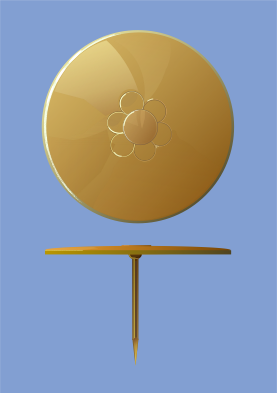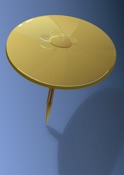Buy a print
DRAWING PIN
The broad, slightly domed head of the drawing pin allows it to be pushed into surfaces without the use of tools. It provides a cheap, unassuming but delicate way of displaying a variety of paperwork.
HISTORY
A ‘Push Pin’, made from a steel needle with a glass head, was invented in 1900 by Edwin Moore in the USA. This was followed by a patent for a flat headed ‘Thumb Tack’ for use with drawings invented by German Clockmaker Johann Kirsten in 1904.
MAKING
There are now many variants on the basic theme but the classic Drawing Pin is made from brass. The sharpened pin is inserted into the ‘press formed’ head and riveted into place. This produces the thickened area at the top of the pin and the raised section in the centre of the head.
DRAWING
The gradual curve of the top creates a subtle form which catches the light in various ways and casts vague shadows. The pressed rings of the flower motif, added to denote the Stephens, Royal Sovereign brand, catch the light in delicate ways that have to be carefully observed. The shaft of the pin with its sharpened point provides a strong feature to complete the image.




To order a print
click here to go to the PRINTS page.











